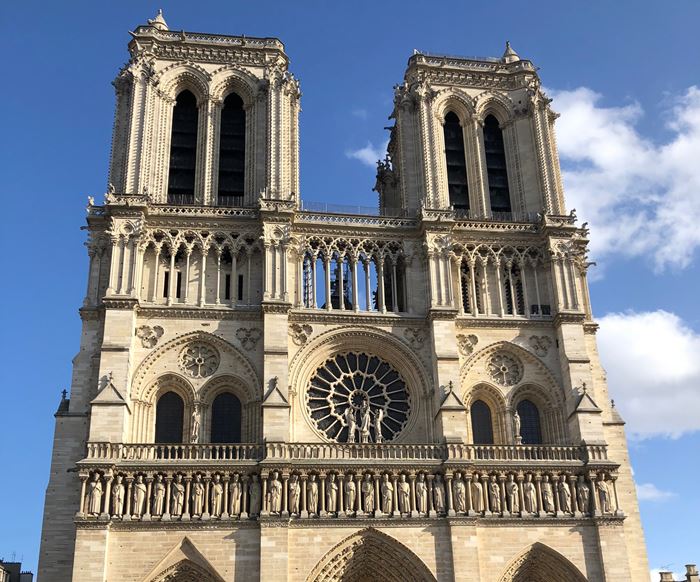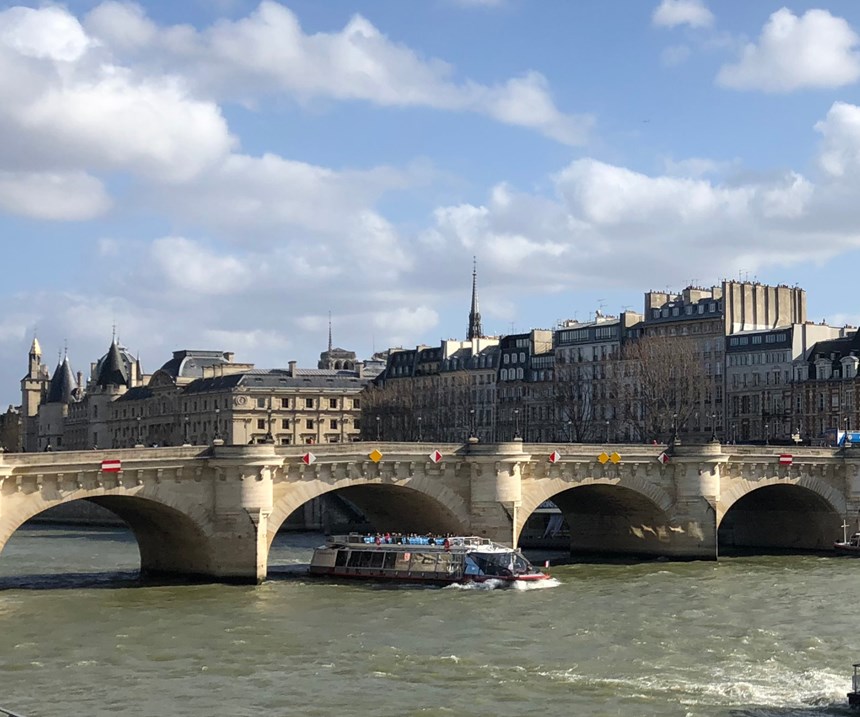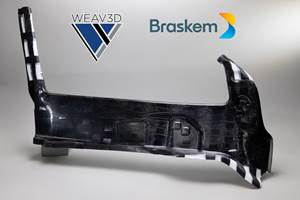Could Notre-Dame rebuild include a carbon fiber spire?
With an international architecture competition underway and restoration efforts ramping up, what role could composites play in finding a solution for rebuilding one of the world’s most well-known cathedrals?
On April 15 the world watched as the Cathédrale Notre-Dame de Paris burned. The staff of CW were texting and emailing each other as the tragedy unfolded — the team had just visited the cathedral a month ago while in Paris for JEC World 2019. Like the rest of the world, we took a few minutes of the day to swap our Notre-Dame stories and photos with coworkers; we kept checking in to see if the fire had been extinguished yet — to see how bad the damage was. Having just visited the cathedral made the thought of the damage to such amazing architecture and art all too vivid.
And also like the rest of the world, our thoughts quickly turned to the rebuild of the cathedral. Nearly $1 billion has reportedly been raised for restoration efforts already and the donations show no sign of slowing down. However, as the funding grows, so does the debate over what a rebuild should look like. What kind of materials and technology will be used? Will the design replicate the original spire or offer some sort of evolution? And shouldn’t composites, with their ability to offer low-weight strength and stiffness as well as fire resistance, play a role?
While some call for historical accuracy and restoring Notre-Dame as it was (keep in mind the roof was constructed of wood and lead), others suggest modernizing parts of the structure. On April 17, French Prime Minister Edouard Philippe announced an international architecture competition for a design that would be used to rebuild Notre-Dame’s spire. Naturally, the discussion now turns to the materials and technologies that will be employed as well as the approach to the design.
In a National Public Radio (NPR) story that aired April 18, urbanist architect Jean-Michel Wilmotte was quoted as saying, “Notre-Dame had its medieval history, but it can also have a passionate new story today. The fire is now part of the cathedral’s history, so why not a new roof in titanium and a spire in lightweight carbon [fiber]?”
Wilmotte along with French contracting giant Bouygues (Paris, France) and engineering consultants Calcul Méca (Nantes, France), utilized composites in the design of Sainte-Trinité, a Russian Orthodox cathedral in Paris topped with glass fiber-reinforced domes. Five gilded composite domes were fabricated for the cathedral’s roof. Composites manufacturer Multiplast (Vannes, France) produced infused molded sections for the domes using Sicomin’s SR8100/ SD4772 epoxy infusion system and a heavyweight quadraxial glass fabric (QX1180) combined with a woven 500-g/m2 glass fabric. The solution is said to have to significantly reduced building dead loads — each composite dome is one-fifth the weight of a conventionally constructed dome.
Read more about the project in CW contributor Sara Black’s story “Russian Orthodox cathedral in Paris topped with composite domes.”
For tall structures, composites offer the ability to lower weight and while providing strength and stiffness to resist high winds. A good example is the 610m/2001-ft tall Makkah Clock Royal Tower that crowns the Abraj Al-Bait hotel complex in Saudi Arabia. To minimize weight, the clock tower was designed with a steel spaceframe clad with composite panels strong enough to resist wind speeds of 53.8 m/sec (131 mph/211 kmh).
In addition to providing strength with low weight, there are a variety of fiber and resin combinations which provide fire resistance. The most used resins for low-smoke flame retardant (FR) composites are acrylic-based systems that are heavily filled with alumina trihydrate (ATH), including Ashland’s (Columbus, Ohio, U.S.) MODAR and Scott Bader’s (Northamptonshire, U.K.) Crestapol. There are also intumescent veils and gelcoats as well as newer resins, like the bio-based polyfurfuryl alcohol (PFA) which is being used in rail interior structures made using prepreg, a possibly very attractive option for the structural, perhaps even sculptural elements of a lightweight carbon fiber-reinforced polymer (CFRP) spire.
“This is such an untapped area, and using composites enables large, curved surfaces plus lightweight for multistory buildings,” says Thom Johnson, Ashland business manager for specialty resins. “We see it breaking through with the leading architects globally.”
See CW senior editor Ginger Gardiner’s story “Withstanding fire without the weight.”
The debate over the restoration of Notre-Dame — how to preserve what remains of the cathedral and what might be re-imagined — is just beginning. Politics, funding, historical preservation, and concerns about public safety will all factor into plotting the course. Hopefully part of the discussion will include consideration for the role advanced materials could play. Whether used to recreate the original design or to modernize sections of the building, composites could prove instrumental in preserving the beauty of Notre-Dame for generations to come.
Related Content
3D-woven composites find success in aerospace, space
CAMX 2024: Bally Ribbon Mills experts are displaying the company’s various joints, thermal protection system (TPS) technologies and other 3D woven composites for mission-critical applications.
Read MoreComposite resins price change report
CW’s running summary of resin price change announcements from major material suppliers that serve the composites manufacturing industry.
Read MoreBraskem demonstrates PP solutions using Weav3D composite lattice technology
Partnership combines Braskem’s polypropylene sheets with Weav3D Rebar for Plastics technology to address new structural, automotive applications requiring high-strength, lightweight material solutions.
Read MorePlant tour: Albany Engineered Composites, Rochester, N.H., U.S.
Efficient, high-quality, well-controlled composites manufacturing at volume is the mantra for this 3D weaving specialist.
Read MoreRead Next
Plant tour: Daher Shap’in TechCenter and composites production plant, Saint-Aignan-de-Grandlieu, France
Co-located R&D and production advance OOA thermosets, thermoplastics, welding, recycling and digital technologies for faster processing and certification of lighter, more sustainable composites.
Read MoreDeveloping bonded composite repair for ships, offshore units
Bureau Veritas and industry partners issue guidelines and pave the way for certification via StrengthBond Offshore project.
Read More“Structured air” TPS safeguards composite structures
Powered by an 85% air/15% pure polyimide aerogel, Blueshift’s novel material system protects structures during transient thermal events from -200°C to beyond 2400°C for rockets, battery boxes and more.
Read More

























